Gunther Barbed Point 3
$25.00A colorful Gunther Barbed point made of Flint Ridge flint.
Showing 109–120 of 170 results
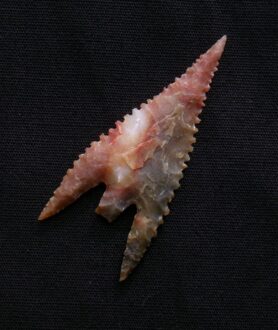
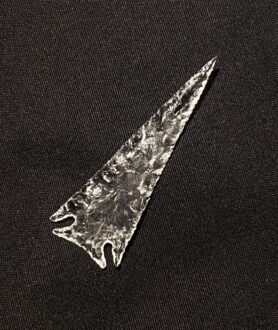
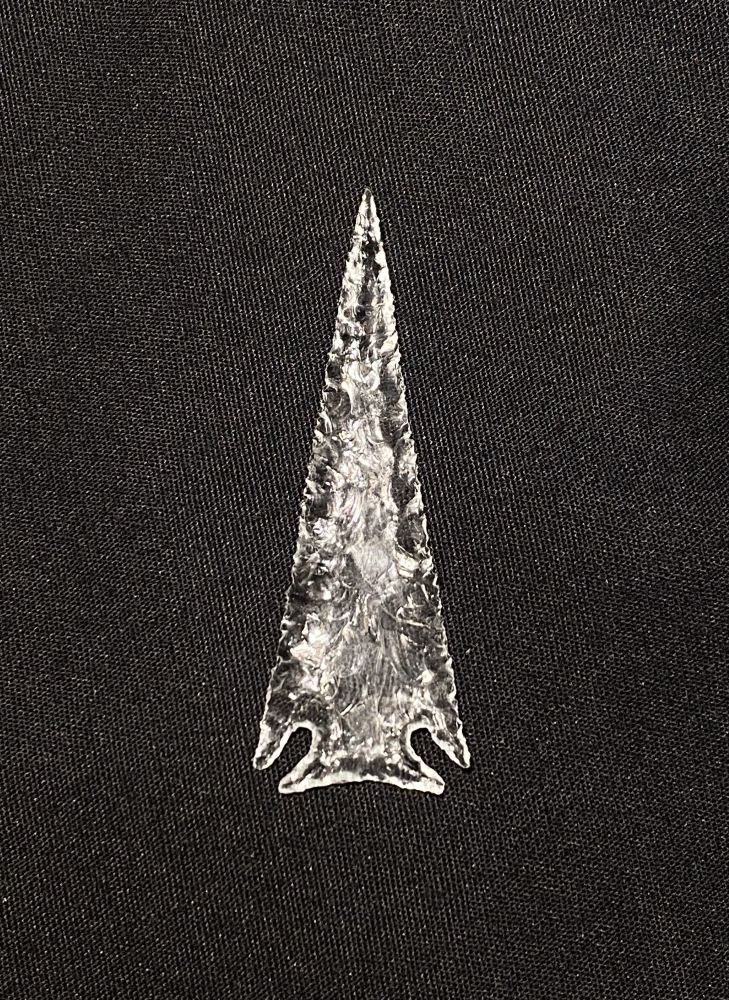
This fresh-outta-the-shop arrowhead copies the ones Ishi made when he was living in his aboriginal homeland in the wilderness of Deer and Mill Creeks in Northern California. Ishi’s arrows were tipped with points of clear window glass just like this one; the glass was most likely scavenged from broken windows in old cabins. This fine point follows the exquisite workmanship that Ishi put into all his weapons. Free shipping within the U.S.
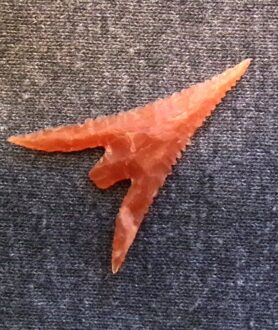
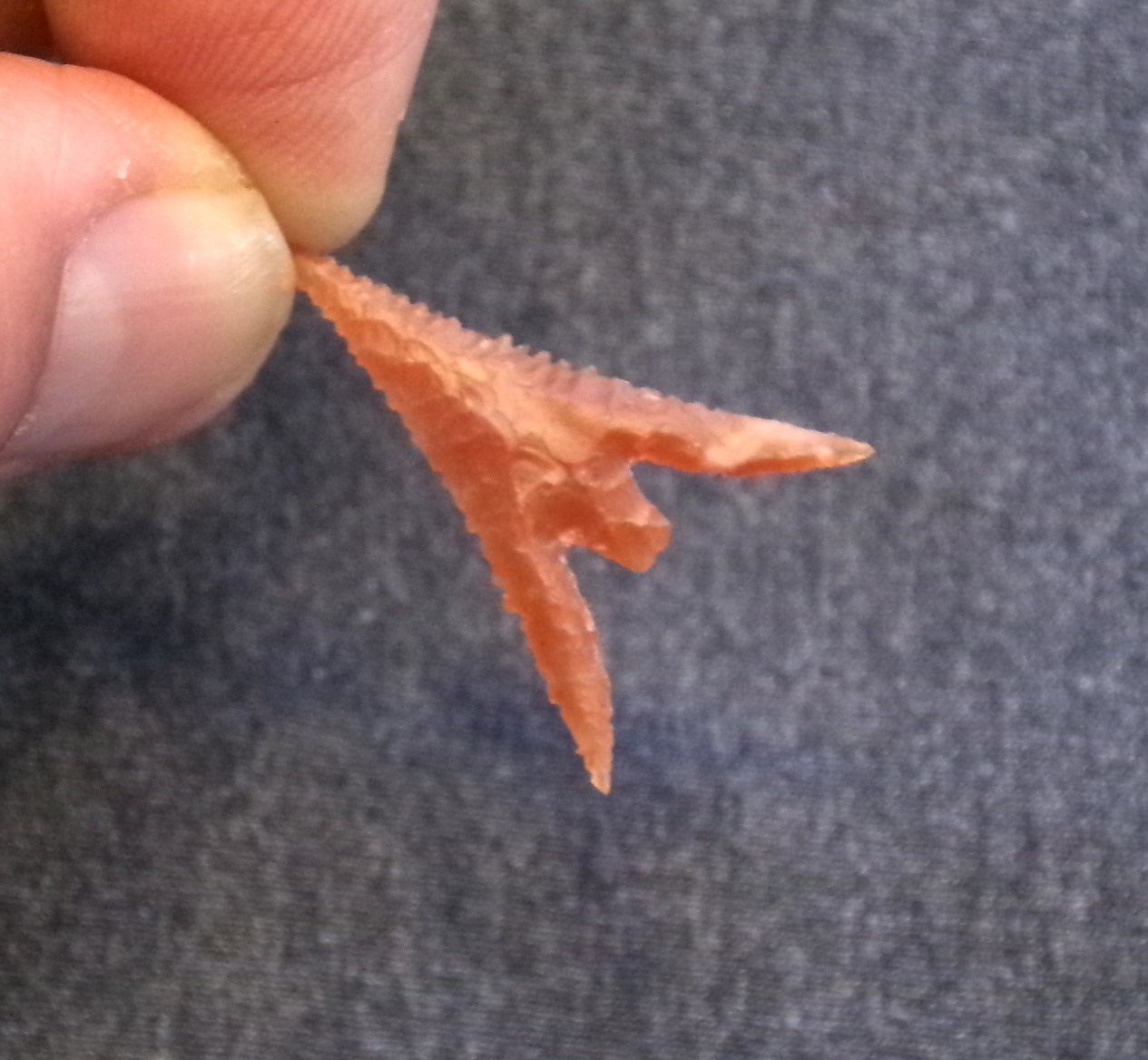
This small but deadly Gunther Barbed point is made from a piece of pink coastal plains flint and has long barbs, finely serrated edges and a needle sharp tip.
Arrowhead Specs: 1 1/4″ long x 7/8″ wide. Free shipping on this item to any US destinations.
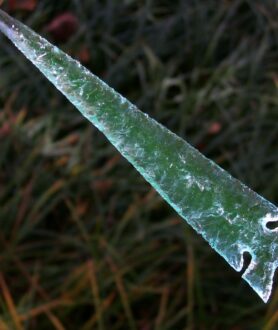
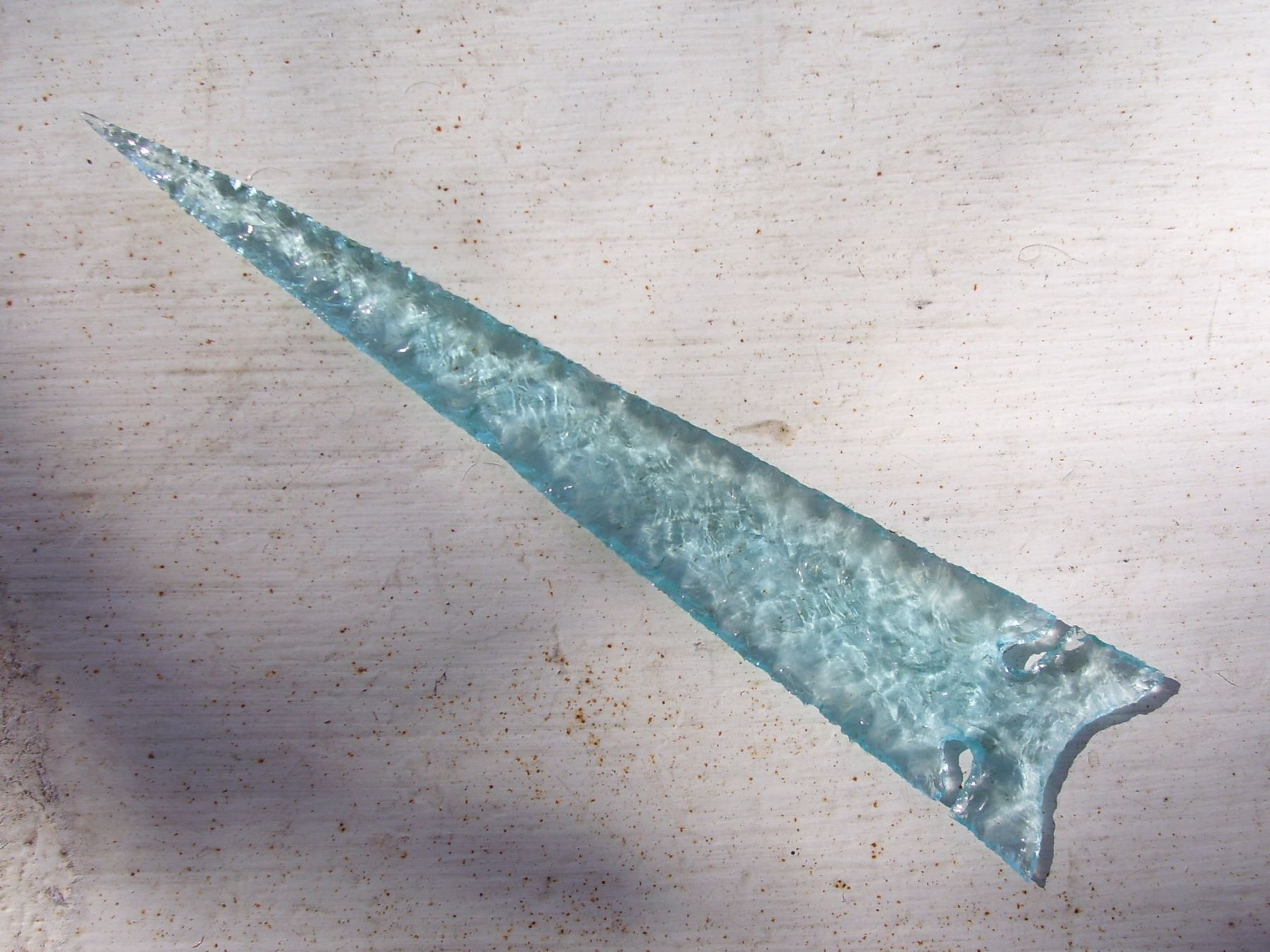
This exquisite Wintu point is made from a piece of ice blue glass. This long, lean point is 4″ long and just barely under 1″ in width at the base. It’s gorgeous, with delicate, upturned notches and a flat, symmetrical profile. Points of this size are difficult to make because they’re so easy to snap in half if your support isn’t perfect. Thankfully this one made it through the treacherous manufacturing process and this is the result.
Free shipping on all U.S. destinations.
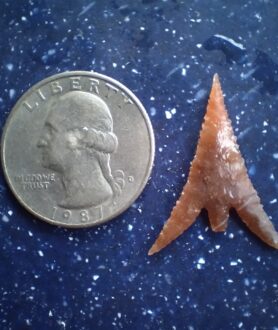
This small but exquisite Gunther Barbed point is made of coastal plains flint, but it has the same color as the jasper that many authentic Gunther Barbed points are made from. It’s flat, thin, and has very clean flaking on both faces of the point. Despite its small size, arrow points of this size were commonly used in prehistory for hunting big game like deer and bighorn sheep.
Free shipping to all destinations within the U.S.
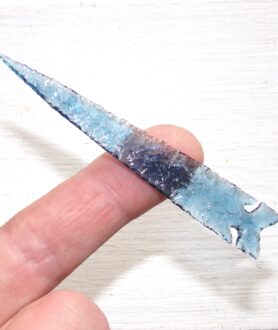
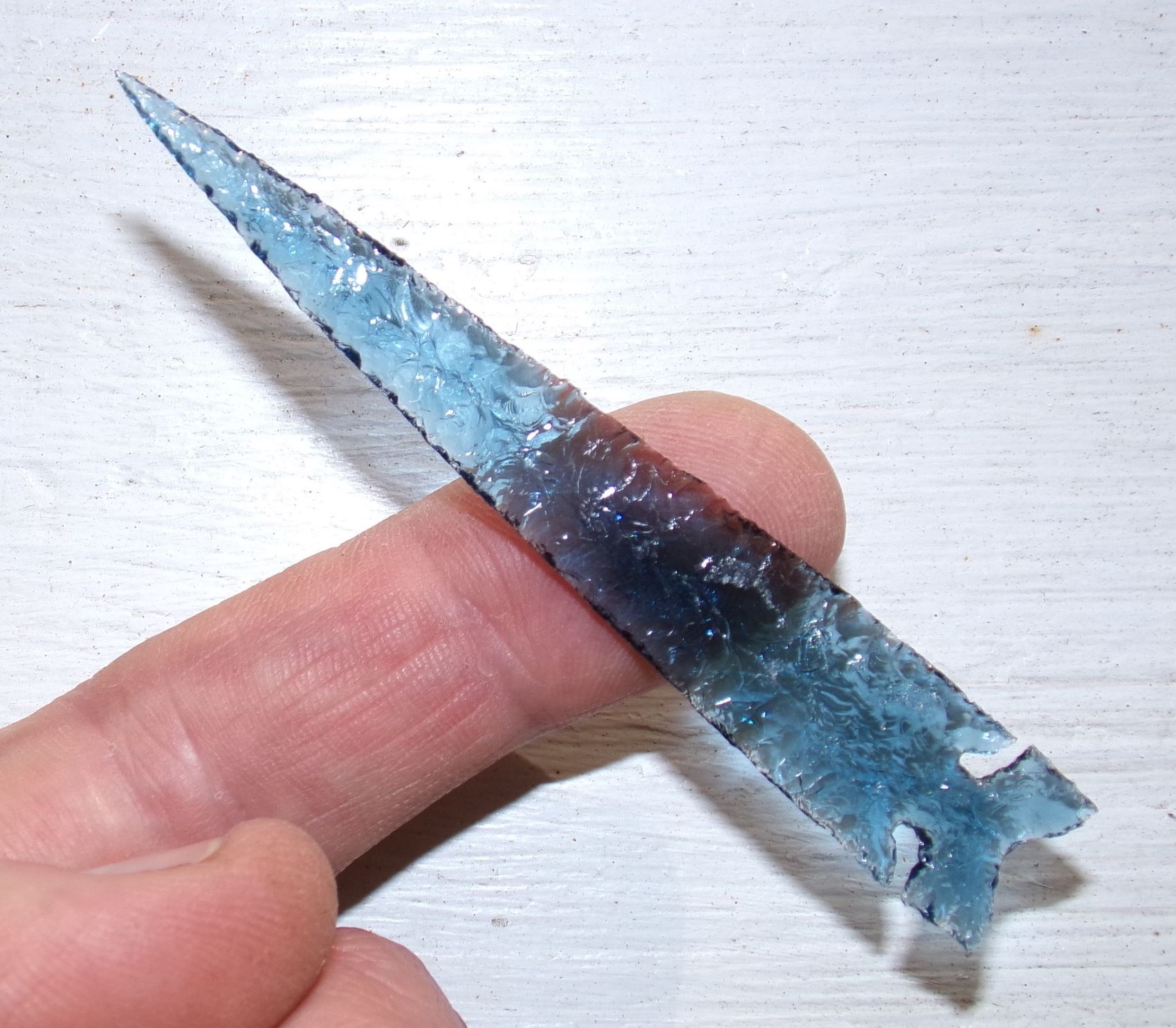
This cool looking Wintu point is made of blue glass and it has a very long, lean profile with delicately made upturned notches. This point is flat and also quite thin and is a beautiful example of fine flintknapped art. The Wintu people lived in Northern California near the town of Redding and originally they made their exquisite arrow points out of obsidian, but started using glass after white settlers moved in.
Arrowhead Specs: 3″ long x 1/2″ wide.
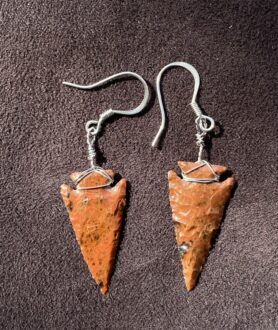
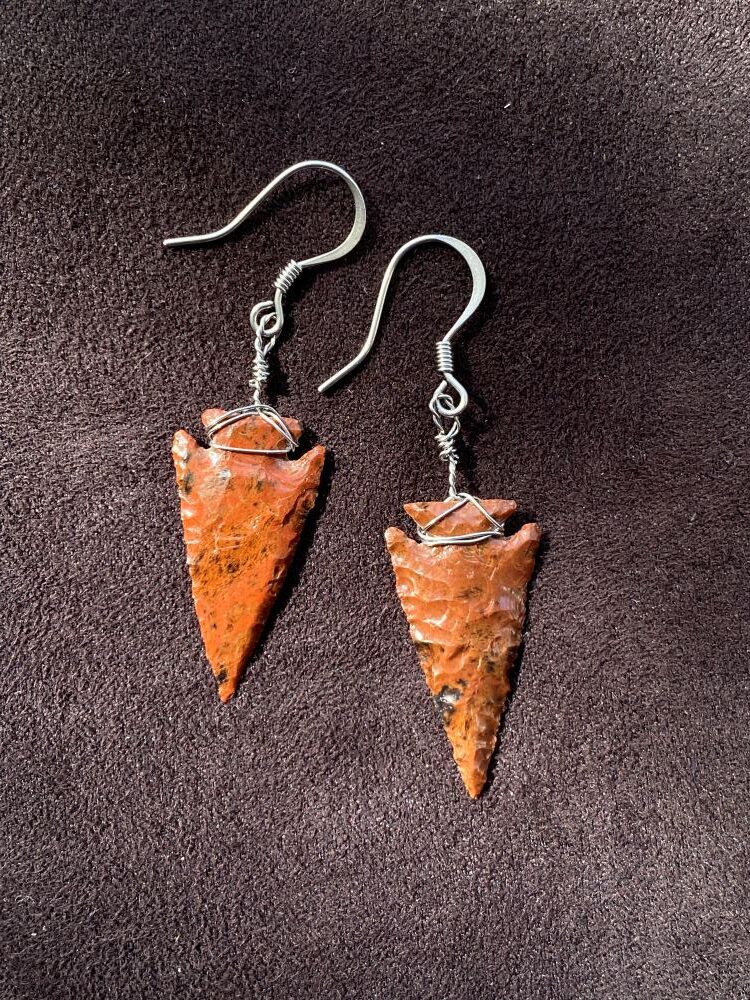
Two small corner notched arrowheads made of mostly brown mahogany obsidian are the feature of this set of earrings. They’re wire wrapped in stainless steel and have stainless steel hooks. These light, dainty earrings are easy to wear all day. They’re a little more brown as opposed to the orange color they exhibit in the photos. Free shipping within the U.S.
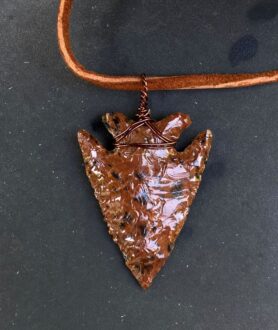
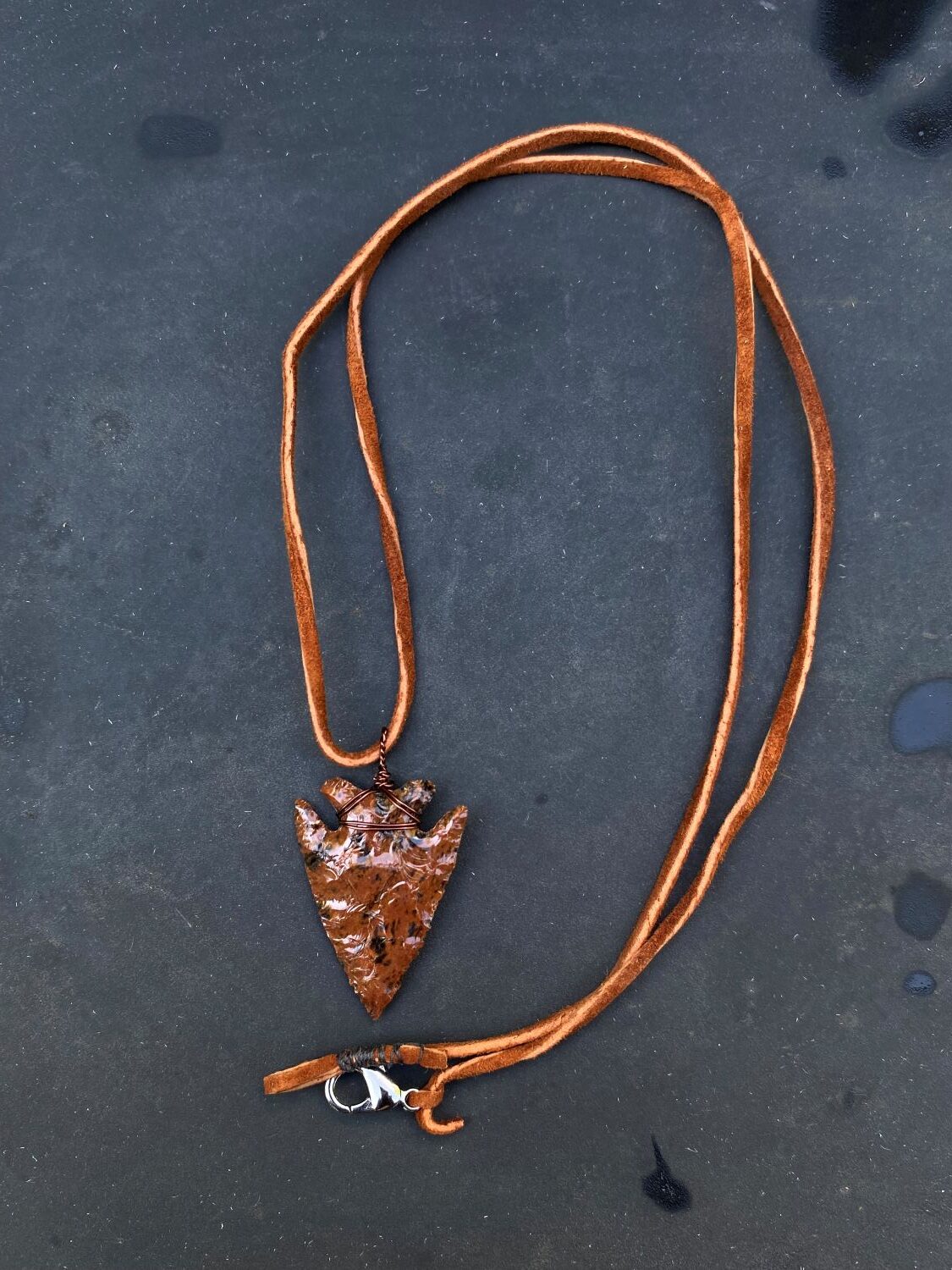
This necklace features a hand chipped arrowhead made of mahogany obsidian with copper wire wrapping attached to a brown leather cord. It has a stainless steel lobster clasp for a secure fit. As is, the cord is 26-inches in total length. This length can be adjusted, and if you’re interested in this necklace but want the length altered, put that in the notes section of your order and I’ll adjust the length of the cord to fit your request at no charge. I call this a Great Basin necklace because the arrowhead (which is actually more of a dart point if we want to be accurate) is of the Elko Eared type, which is a very common dart point design that was used in the Great Basin between 3,500 and 1,200 years ago. Free shipping within the U.S.
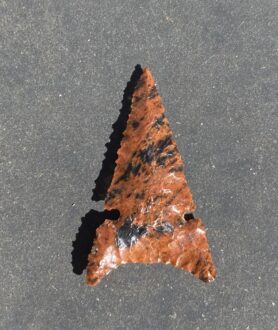
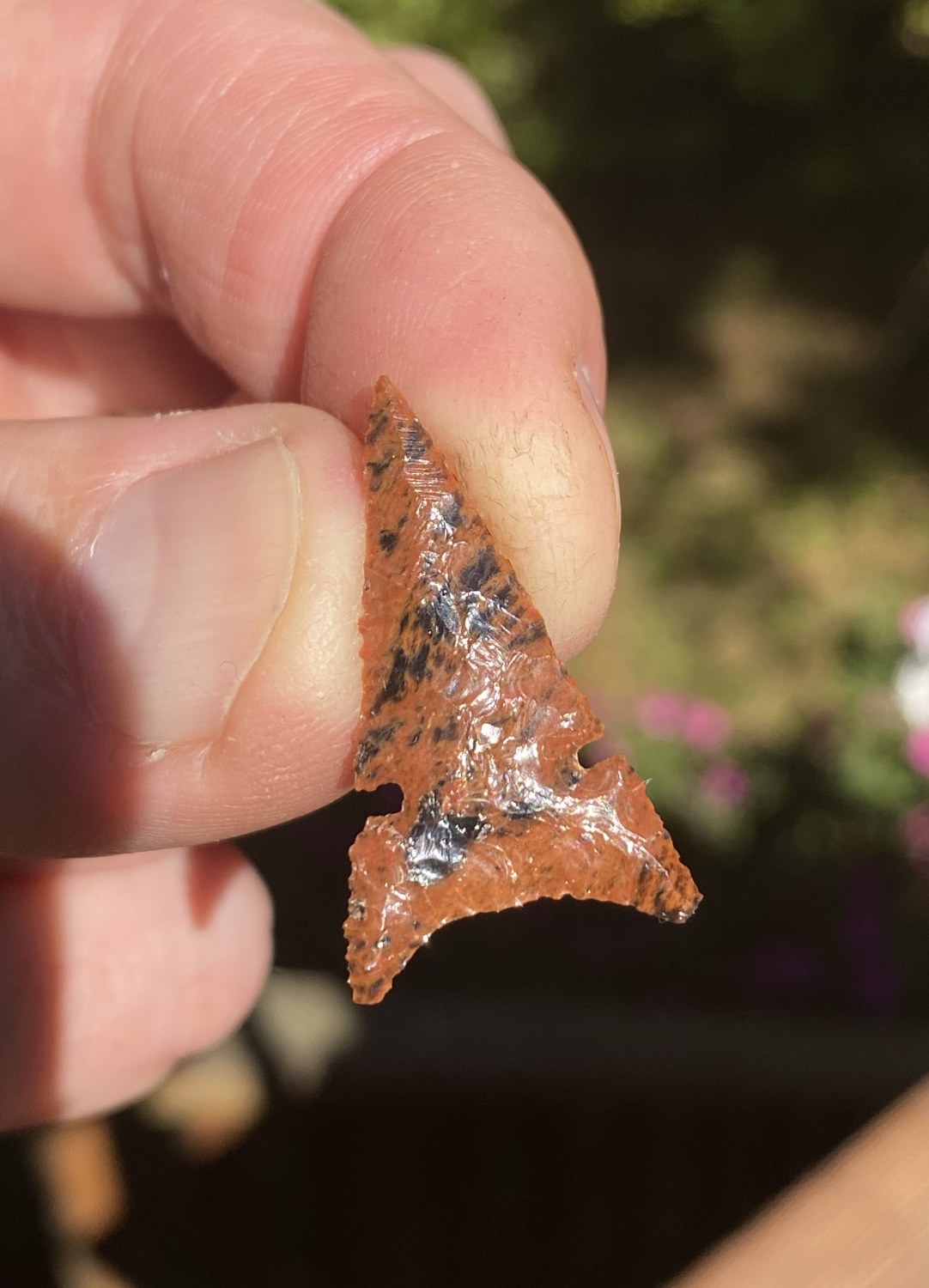
This Desert Side Notched arrow point is made of mahogany obsidian and is a copy of authentic Desert Side Notched arrow points found in the Great Basin of the Northwestern U.S. These points were used for hundreds of years to tip the hunting arrows of the Northern Paiute people who once called the high desert of the Pacific Northwest their home. This point could be used to make replica Great Basin arrows, kept as a collectible point, or used for hunting. 1 1/2 inches long x 3/4 inches wide. Free shipping to all US customers.
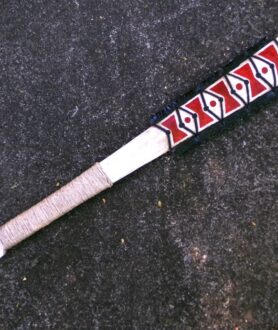
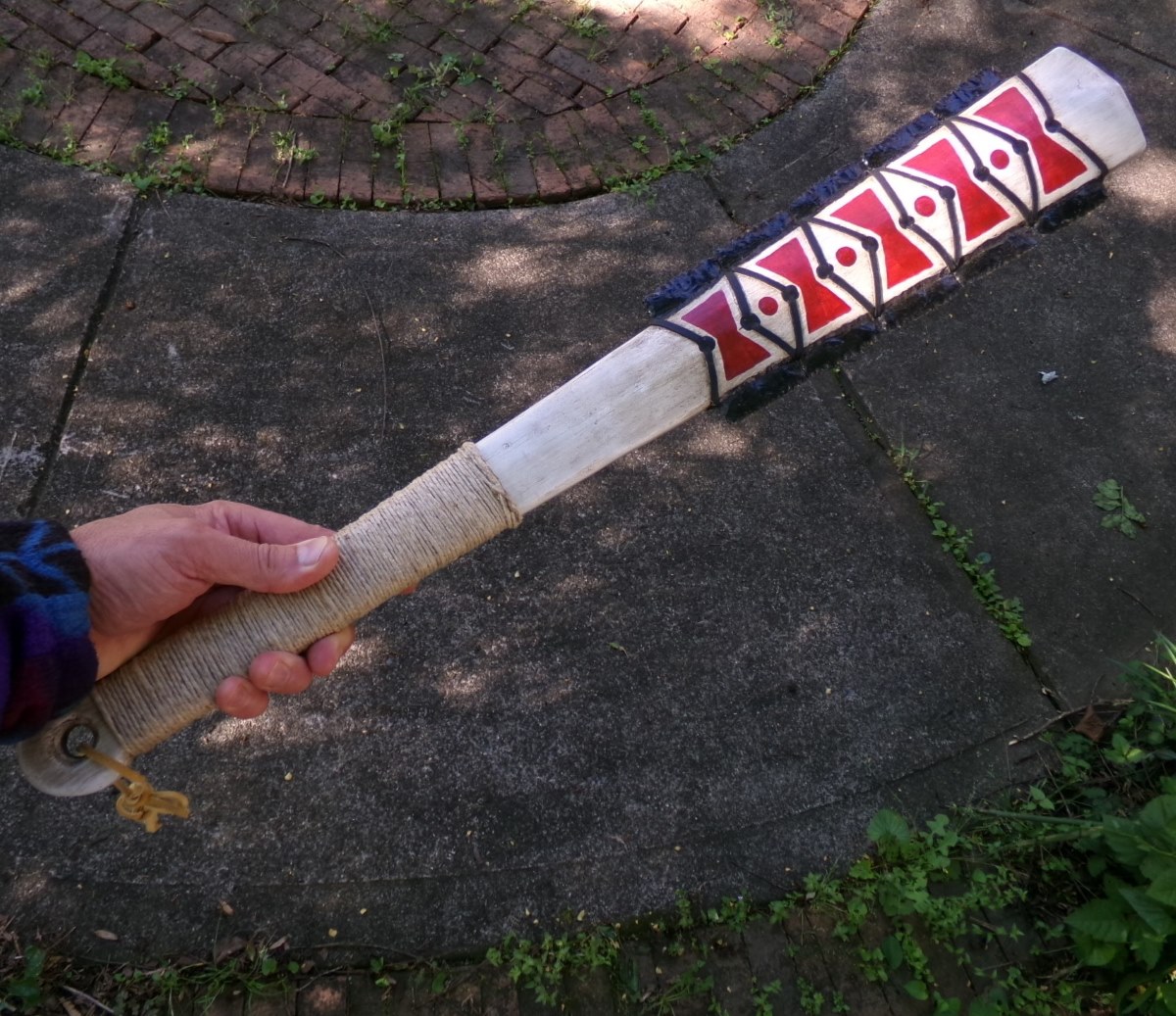
This is a Maquahuitl, which is essentially an Aztec broad sword that was used in prehistory in warfare. This weapon that could inflict incredibly devastating wounds to an enemy. This one was made by my good friend Dan Spier. This is a flattened, wooden paddle that has obsidian blades secured along each edge. The only difference between this Maquahuitl and the original ones is that this one has bifacially flaked obsidian blades instead of the bladelets that were used in the original Maquahuitls made by the Aztecs. The obsidian blades in this weapon aren’t quite as sharp as the bladelets, but make no mistake…this weapon is just as deadly as the original ones. The bifacially flaked obsidian edges in this one are more durable and aren’t as easily chipped or dulled as actual bladelets. This sword is 28 inches in long total length.
This Aztec sword must be handled very carefully! Customer assumes all responsibilities with this product.
Free shipping within the U.S.
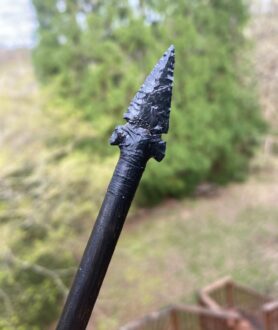
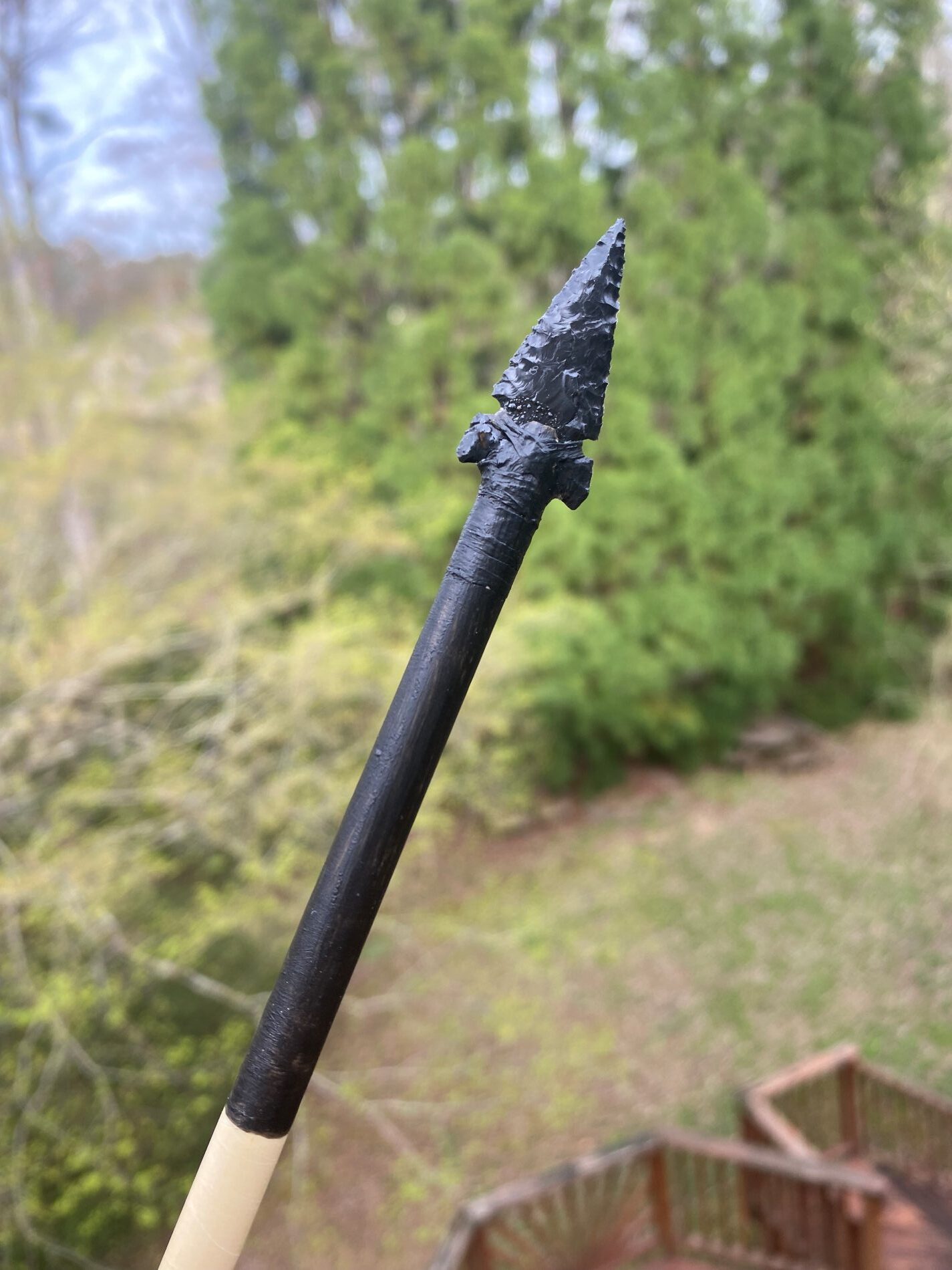
This is a museum-quality replica of a Modoc arrow that was in the collection of the late Dr. Bert Grayson. The shaft is made from a syringa shoot. It’s fletched with turkey wing feathers and all the paint is natural earth ochre and charcoal. The side-notched point is made of obsidian from Glass Buttes, Oregon. It’s secured with pine sap glue and deer sinew, and the feathers are wrapped on both ends with deer sinew and they’re also glued to the shaft with hide glue, just like the original.
This arrow isn’t foreshafted…it’s a single shoot. The sinew wrap towards the front of the arrow is painted with ochre, and it’s believed these sinew wraps were draw point markers to help the archer draw each arrow consistently, which promoted consistent arrow placement when hunting.
The Modoc lived along Klamath Lake along the California/Oregon border.
Arrow is shipped in a sturdy PVC pipe to ensure safe delivery to your door.
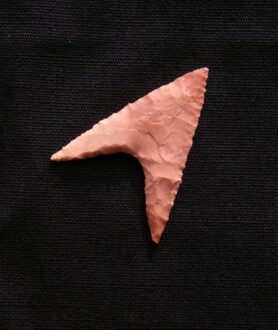
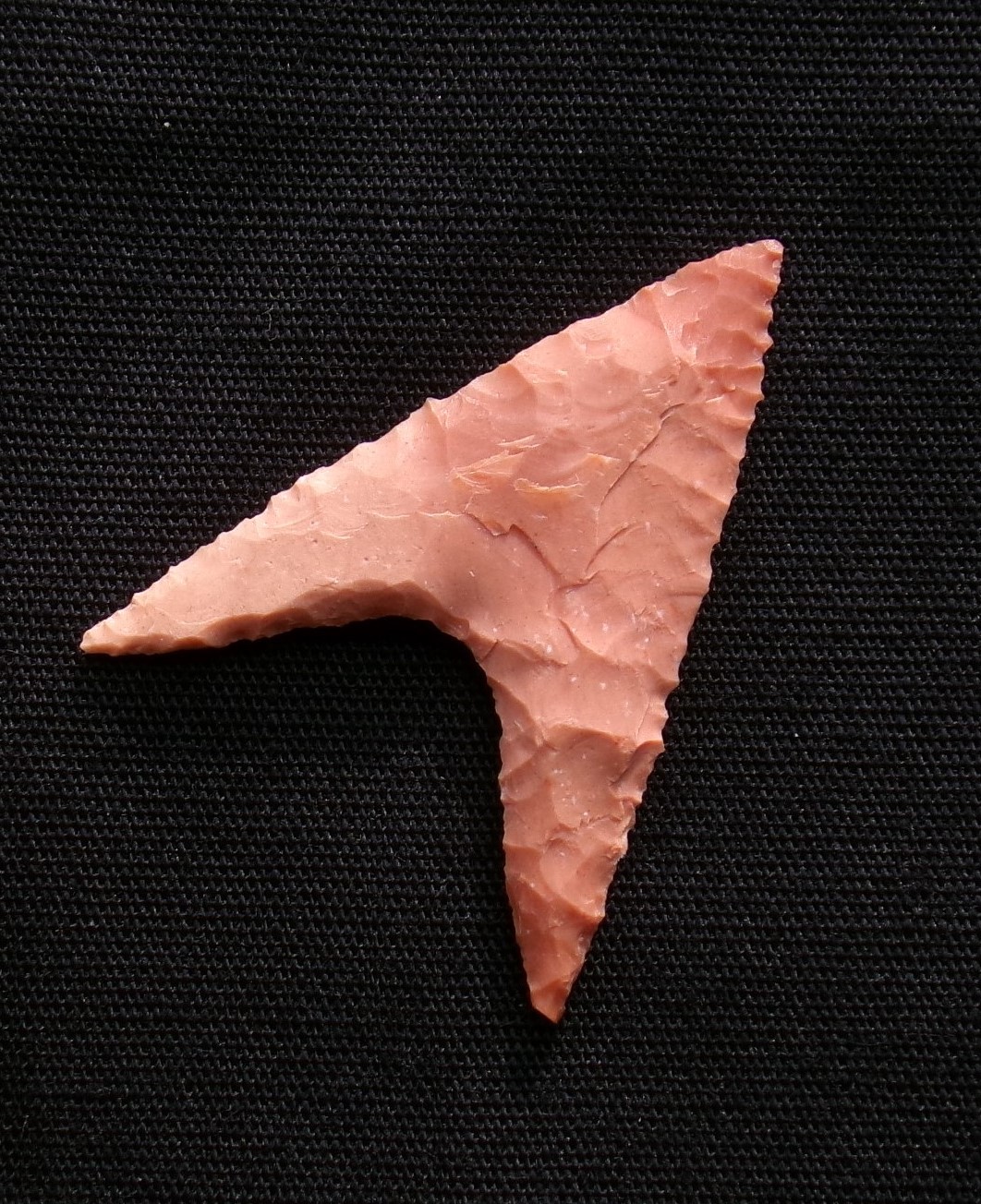
This simple but pretty arrowhead is a copy of arrowheads used in Northern Africa around 8,000-12,000 years ago. They’re sometimes called “hollow base” points due to the deep, concave base. Large numbers of these points have been recovered from sand blow-outs created when high winds expose previously hidden artifacts. This point is made of pink chert and has a deep concave base with long ears that would have performed as barbs when the arrow struck its prey.
Archaeological evidence shows that after the last Ice Age the Sahara desert wasn’t even a desert back then. Frequent rainfall created lakes and streams that attracted large numbers of game, and with that came the humans who hunted them. Prehistoric encampments found on the shores of ancient lakes and rivers also contained the bones of the animals they hunted; zebra, hippos, wild cats, and even shorebirds indicate there was abundant water during that remote time. The subtle wobble in the earth’s rotation (which cycles every 26,000 years) began to shift weather patterns beginning around 4,500 years ago, ushering in much drier weather. Artifacts like this arrow point speak to a much more productive time before climate shifts drove the rainfall away and allowed the Sahara to dry up and become the desolate place it is today.
Arrowhead specs: Northern Africa (hollow base) arrowhead replica made of pink chert, 7/8″ long x 3/4″ wide. Free shipping within the U.S.
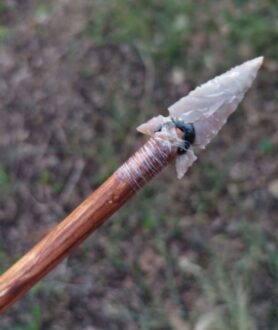 Apache Arrow Replica 1
1 × $160.00
Apache Arrow Replica 1
1 × $160.00 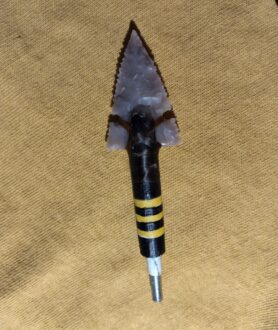 Flint Hunting Point for Modern Arrow (125 grains)
1 × $45.00
Flint Hunting Point for Modern Arrow (125 grains)
1 × $45.00 Subtotal: $205.00